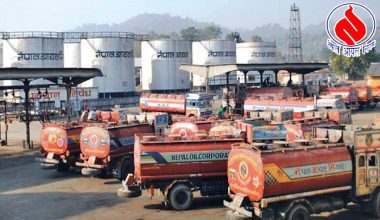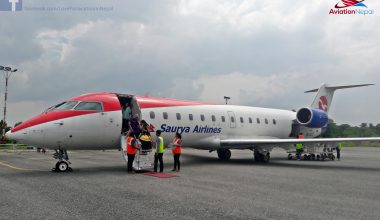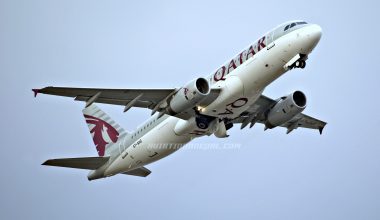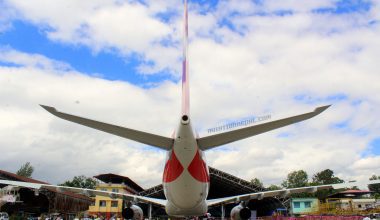Integrating Safety Management System in Airline Business
04 March 2015 – Bikal Jha – Airline safety is becoming more complex these days as system complexity of mechanization is increasing day by day. Often we hear from Airline that “safety is our first priority” how does this really work in reality? Off course any business around the world is to make money not to manufacture safety so true objective of any airline is to make money by selling the service and this is what is supposed to be. Aviation businesses, like other businesses, operate in the marketplace. The reality is that businesses exist to make a profit. Without the ability to make a profit, a company will not remain in business, and will thus not be viable. Companies have a legal and regulatory obligation to remain viable. Company’s also have a legal obligation under Public Law, “…provide service with the highest possible degree of safety in the public interest…” and holds their managements accountable for doing so. Therefore, making money and doing it safely are foundational to their business model and business decisions.In total, Companies have an obligation to provide a useful and safe product or service, and to do so while making money.
Thus, since we exist in such a risk inherent environment, we must integrate safety, risk management and risk control in everything we do whether it is to develop, modify or maintain a product or deliver a service. However, all airlines are not in equal size and not making equal profit so we cannot expect all airlines to invest same amount for safety but we can expect all airlines to implement the entire minimum requirement provided by state authority and Integrating safety into business decisions & making the case for integrated management is foundational.
Photo : Workshop on Flight Safety Documentation ; Fetched from CAAN Website
One of the basic safety fundamental is safety management system (SMS) which is even required by authority to integrate in business. All most all airlines in Nepal have integrated this SMS system but most of them just to fulfill the regulator requirement. One of the basic element required to understand by operators is implementing safety management in airlines is not an extra expenditure it’s a money making system.
Operating an effective safety management system can be a tough task. Taking a systems approach will help ensure that the elements necessary for building an effective program are present.The ten steps for establishing an effective safety program are briefly discussed here. Integrating each of these elements into a coherent program in effect implements a safety management system. The very first step would be top level management support, top level management should be committed towards safety and they should understand the whole implementation process. The whole philosophy of a company’s attitude to safety – the company’s safety culture – is established from the outset by the extent to which senior management accepts responsibility for safe operations, particularly the proactive management of risk. Regardless of the size, complexity, or type of operation, the success of the safety program depends on the extent to which senior management devotes the necessary time, resources and attention to safety as a core management issue.
The second step would be setting the safety policy and objectives, the purpose of developing safety policies and objectives is to set out what the organization is striving to achieve, and how it is going to get there. Safety policies outline the methods and processes the organization will use to achieve desired safety outcomes. They serve as reminders as to “how we do business around here” and are a physical indication that management is committed to safety. Unfortunately, Airlines in Nepal is reminding every time that they are just making money by doing this business rather than making money while providing safe service. The third step would be setting up organization structure along with safety managers which has been done by almost all airlines in Nepal.
Fourth step would be Hazard Identification continuing fifth with “Risk Management” Risk management begins with hazard identification. An effective hazard identification system is an essential element of risk management. Indeed, hazard identification is probably the major function of any safety program. The key features of an effective hazard identification system are: Identifying unsafe conditions, collecting current and applicable hazard information, a procedure for receiving and auctioning reports of hazards, A reliable method of accurately recording, storing and retrieving hazard data, The capability to analyze hazard reports, both individually as well as in aggregate; A procedure for distributing lessons learned to affected staff and contractors; and Capable of being audited.A hazard may become evident through incidents or proactive/predictive safety data capture systems. Once a hazard is identified, it is analyzed for likelihood of occurrence and severity of risks. These factors are assessed and the “acceptability” of the risk is determined. Depending on the level of acceptability, mitigating measures are adopted. Risk assessment begins with the complete and detailed analysis of the system to be evaluated along with the environment in which the system operates. Most of the Airlines are identifying hazards even evaluating the risk but when it comes to mitigate the risk they start thinking about investment for that particular mitigation and if management is not supporting or understanding the consequences of hazard all the above mentioned steps fails as lack of top level management support can be identified.
Improving Investigation capabilities and having safety analysis capabilities would be sixth and seventh step for implementing safety management system in Airline.An effective safety program includes the capability to investigate any occurrences from a company perspective. The investigation of minor accidents and incidents (not reported to the State) provides another source for hazard identification. The safety value of these investigations is proportional to the quality of the investigative effort. Without a structured methodology, it is difficult to integrate and analyze all pertinent information from such investigations so as to efficiently assess and prioritize the risks, and to recommend any necessary actions to advance safety. Even safety analysis can be used to identify hazards from aggregated data where wide of analytical methods and tools can be used for conducting meaningful safety analysis as credible risk assessments and convincing argument for mitigating risk depend on solid analytical capabilities.
Safety Promotion and safety information management system would be following eighth and ninth steps for implementing SMS.
Keeping staff informed about current safety issues through relevant training, safety literature, participation in safety courses and seminars, etc. improves the safety health of the organization. The provision of appropriate training to all staff (regardless of their professional discipline) is an indication of management’s commitment to an effective safety program. (Weak management may see training as an expense, rather than as an investment in the future viability of the organization.)New employees should always know what is required of them and how the organization’s safety program functions. Indoctrination training should emphasize, “How we do business here”.
Operating SMS will always generate significant amounts of information — some of it as documents, some of it data in electronic format. With careful management, this information can well serve the accident prevention program, particularly the risk management process. However, without the tools and skills to record, store, and retrieve this information, it is essentially useless and its collection a waste of time.
Taking a systems approach to safety requires “closing the loop”. Feedback is necessary to assess how well the first nine steps are working. This is done through safety oversight and program evaluation which can be considered as Tenth or last step “Safety Oversight”.Safety oversight can be achieved through inspections, surveys audits. Safety audits assure staff and management that company activities are being performed as required (i.e. safely).
To Sum up, Implementation of Safety Management System is required approach of safety for Airlines, Airports, Aircraft Maintenance Organization and other Aviation services. These ten steps which have been discussed above are the guidelines to implement safety management system in any organization as per International civil aviation organization.
Bikal Jha
Aviation Instructor
MCBS- Oman
(IATA Authorized Training Center)
Affiliated with University of Missouri–St. Louis, USA









